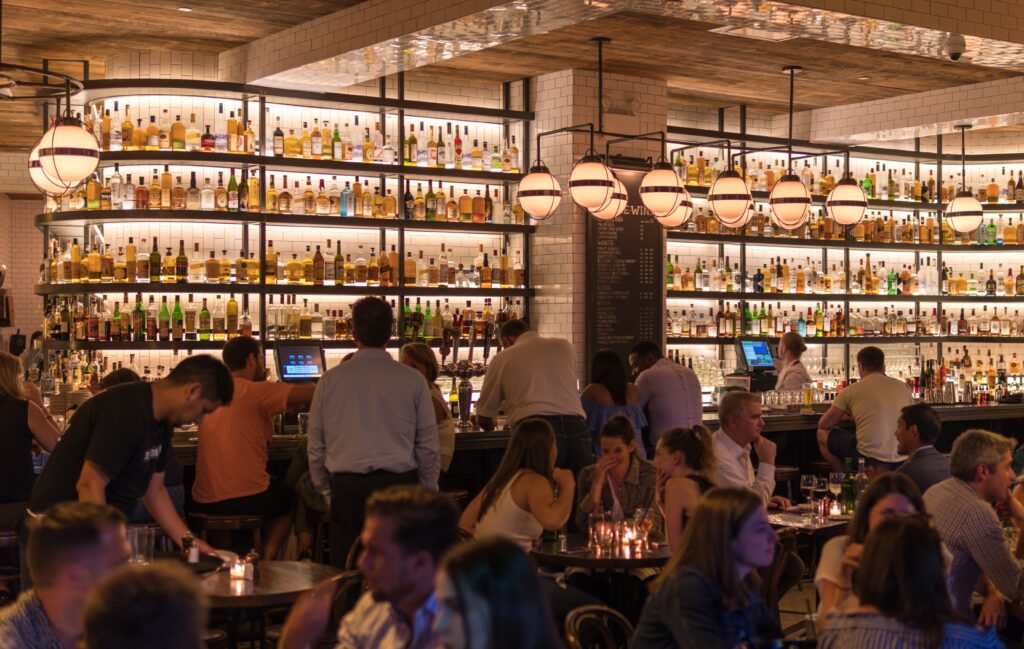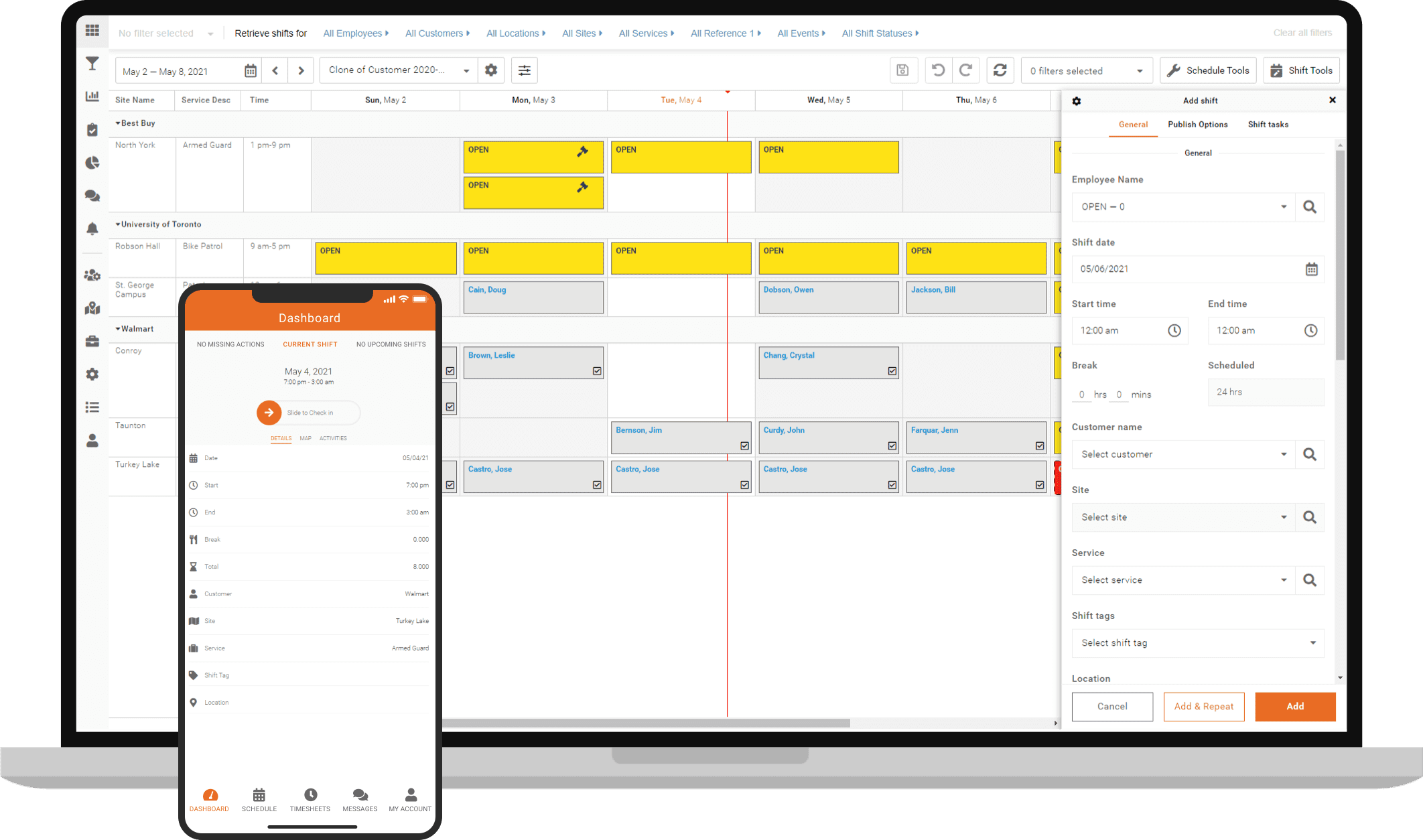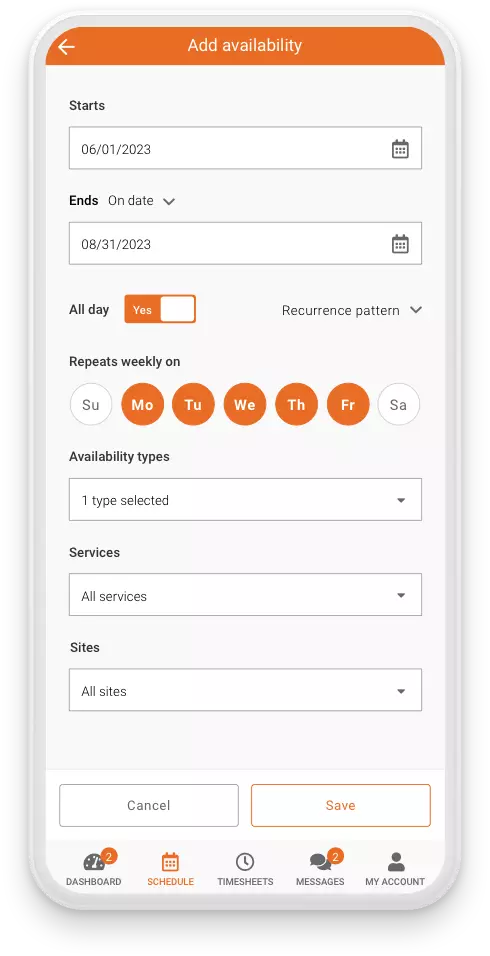A restaurant shift schedule is a plan that outlines the schedule of employees for a specific period of time. It’s typically a week or a month in a restaurant. The schedule typically includes the following:
- Each shift’s start and end time.
- The staff members assigned to each shift.
- The specific tasks and responsibilities for each role.
This can include working the cash register, cooking, hosting, serving, cleaning, and other duties. The schedule is usually created by the manager or scheduling coordinator. They take into account the restaurant’s business hours, the number of staff needed during each shift, and the availability of individual employees.
The goal of the shift schedule is to ensure that the restaurant has enough staff to cover all the shifts while also accommodating the schedule to meet the needs of the employees. This means considering employees’ availability and the hours they prefer to work. It also means ensuring a balance of hours and days off and compliance with labour laws and regulations. Shift schedule also helps keep track of employee hours, shifts, and shifts they missed. This helps calculate the payroll and avoid any last-minute schedule changes.
Scheduling employees in a restaurant can be challenging. It’s essential to get it right to maintain a happy and productive staff and provide good customer service. Poor scheduling can lead to staff shortages, low employee morale, and legal compliance issues. However, with careful planning and scheduling software, restaurants can create schedules that work for everyone.
Problems with creating a Restaurant shift schedule
Lack of visibility into employee availability:
- According to a survey by SoftwareAdvice, 60% of managers find it challenging to manage employee availability when creating schedules.
Managers may need to understand when employees are available to work clearly. This makes it challenging to create schedules that fully staff the restaurant during peak hours. This can lead to last-minute schedule changes, staff shortages, and increased stress for employees who are often called in last minute to cover shifts. One solution to this problem is employee scheduling software, which allows employees to input their availability, making it easier for managers to see who is available to work and when.
High staff turnover:
- According to the National Restaurant Association, the average turnover rate for restaurant employees is 73%.
- A Center for American Progress study found that staff turnover is lower in companies that provide more predictable and stable schedules.
Inconsistent or inflexible schedules can contribute to high staff turnover, as employees may become dissatisfied with a lack of work-life balance. This can be particularly problematic in the restaurant industry, where staff turnover is already high. In order to reduce staff turnover, managers should strive to create schedules that are fair and balanced and take into account employee requests for time off or preferred shift times.
Compliance with labour laws and regulations:
- The US Department of Labor (DOL) found that in 2018 alone, the restaurant industry had the most significant number of minimum wage and overtime violations among all industries.
In order to create schedules that comply with labour laws and regulations, managers must be aware of laws and regulations regarding breaks, overtime, and minimum wage. These laws vary depending on the location and can be challenging to comply with when creating schedules. Managers must also remember that scheduling employees for extended periods without breaks can violate labour laws, overtime laws or the Fair labour Standards Act. Resultantly, it’s essential to be aware of the laws in your area and comply with them when creating schedules.
Difficulty staffing for busy hours:
- According to the National Restaurant Association, restaurants experience an average of 20% more sales on weekends than on weekdays.
One of the biggest challenges in scheduling restaurant employees is ensuring enough staff members are on hand during busy hours. A lack of staff during peak hours can lead to long wait times for customers and unhappy staff forced to work longer hours to cover the shortage. One solution is to identify the busiest hours for the restaurant, usually weekend evenings, and schedule more staff for those times. Additionally, having a larger pool of part-time staff on call can effectively cover busy hours.

Conflicting employee requests and preferences:
- According to a 2018 survey by the National Restaurant Association, 67% of restaurant employees said having a schedule that fits their personal and family responsibilities is essential to them.
Another challenge with scheduling employees is accommodating the schedule to accommodate employee requests and preferences. Some employees may prefer to work during certain days or at certain times. While others may have personal or family responsibilities that make it difficult for them to work specific shifts. This can lead to dissatisfaction if employees feel they need to be treated fairly and can contribute to staff turnover. To minimize conflicts, managers should be as flexible as possible when creating the schedule. Moreover, they should take into account employee requests and preferences as much as possible.
How to create the perfect restaurant shift schedule
Understand your restaurant’s peak business hours:
When creating a shift schedule, the most critical factor to consider is when your restaurant is busiest. This will help you determine how many staff members you need during each shift and what roles they should fill.
For example, a breakfast diner might have their busiest hours between 6 am and 9 am. In comparison, a fine dining restaurant might be busiest during dinner, around 6 pm to 9 pm. This can also vary depending on the location. Hence, it’s essential to look at past sales data and customer traffic patterns to identify your busiest hours.

Consider your staff’s availability:
When creating the schedule, take into account your staff’s availability. Be flexible and accommodate requests for days off or preferred shift times as much as possible.
For example, if you have a staff member who is a full-time student and can only work part-time, it might not make sense to schedule them for a full-time shift.
Create a fair and balanced schedule:
Avoid scheduling the same staff members for back-to-back shifts or multiple doubles in a week. It’s essential to give your staff enough time to rest and recover between shifts to ensure they can perform at their best.
For example, scheduling an employee to work a double shift one day and then have the next day off is a more fair and more balanced schedule than scheduling them to work doubles every day. A Center for American Progress study found that staff turnover is lower in companies that provide more predictable and stable schedules.
Be aware of laws and regulations:

Be aware of labour laws and regulations in your state or province regarding breaks, overtime, and minimum wage. You will have to comply with these laws when creating your schedule.
For example, in the US, the Fair Labor Standards Act (FLSA) requires that non-exempt employees be paid time and a half for any hours worked over 40 in a workweek. In Canada, provinces may have different rules and regulations on the same. It’s essential to know and comply with the laws in your area to avoid any legal issues.
Use software to help with scheduling:
Shift schedules can be created manually or using scheduling software. The latter allows the managers to automatically create schedules based on the employee’s availability, shift patterns and even the employee skills. The software also allows for easy adjustment of schedule, tracking time-off requests, managing shift trades and sending schedule notifications to employees.
Many scheduling software options can help you create and manage your schedule. These tools can automate many tedious scheduling tasks and help you track staff availability and time-off requests.
For example, scheduling software such as Celayix can make it easy to create and manage your schedule and track employee availability and time-off requests. According to SoftwareAdvice, “78% of managers said their scheduling process is more efficient since implementing scheduling software”. Celayix’s shift scheduling software can help restaurants save up loads of time and money that are incurred due to manual scheduling.
Be open to feedback:
Regularly review and adjust the schedule based on feedback from staff and managers. Remember that the schedule may need to change over time to accommodate changes in business volume, staff availability, and other factors.
For example, if your staff is consistently complaining about the scheduling, there is likely a problem with the schedule that needs to be addressed. It’s essential to be open to feedback and make changes as necessary to create a schedule that works for everyone.
Communicate with your staff:

Make sure to communicate with your staff regarding the schedule well in advance. This will ensure they can plan accordingly and avoid any last-moment confusion.
For example, if you have a staff member going on vacation in two weeks, let them know well in advance and make any necessary adjustments to the schedule. This will ensure they can make their plans and avoid any last-moment confusion. According to a study by the American Payroll Association, employees rank “clear communication” as the most critical factor in a positive employee-employer relationship.
Make your Restaurant shift schedule tailored to your needs.
Remember that creating the perfect schedule is an ongoing process. Finding the best solution for your restaurant may take trial and error. But by considering these points and regularly reviewing and adjusting the schedule as needed, you can create a shift schedule that works well for your staff and your business.
Scheduling employees in a restaurant can be challenging. However, with careful planning and scheduling software, it’s possible to create schedules that work for everyone. In a survey by the American Payroll Association, employees rank “clear communication” as the most crucial factor in a positive employee-employer relationship. Managers should strive to create fair and balanced schedules, consider employee availability, and comply with labour laws and regulations. By being open to feedback, managers can ensure that their employees are happy and productive and that their customers receive excellent service.






